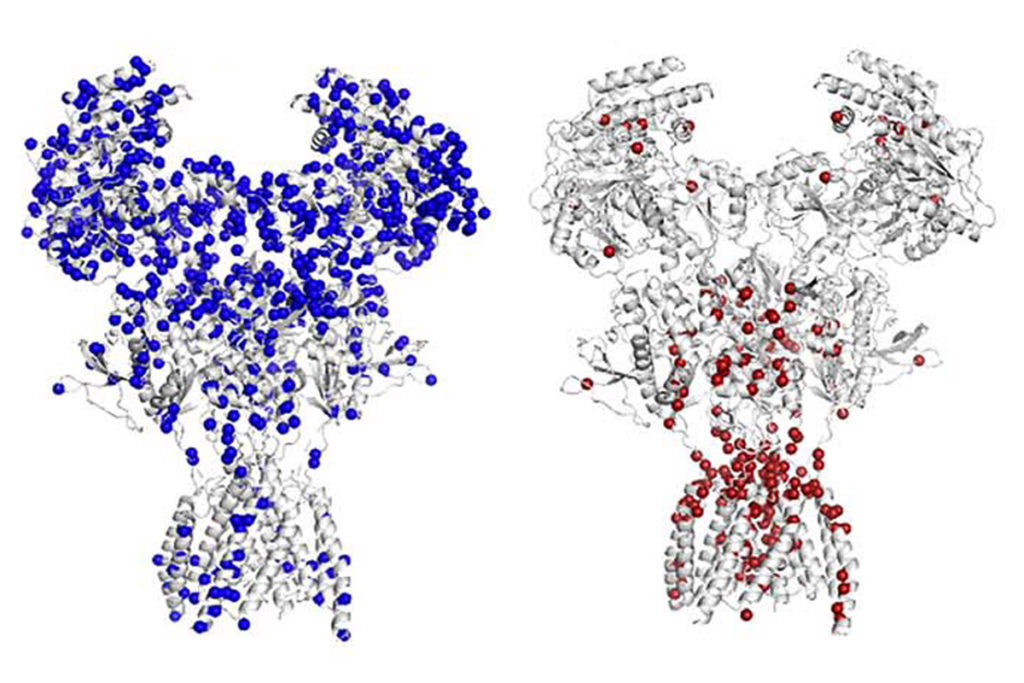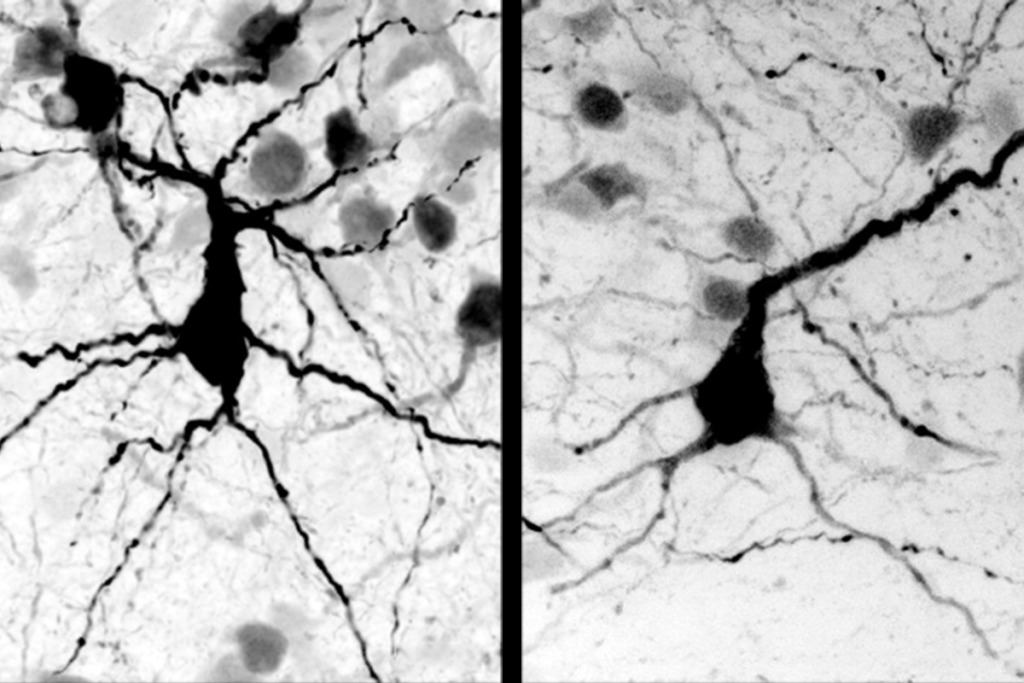Questions for Elizabeth Berry-Kravis: Dodging mouse traps
A mouse model of fragile X syndrome lacks a key feature of the condition, prompting researchers to look for other ways to test treatments.
Researchers depend on mouse models to study certain conditions, and to test candidate drugs. The argument against using mice has always been that they are poor mimics of human behavior. In the case of fragile X syndrome, an autism-linked condition, that concern is proving all too valid.
A strain of mice often used to test drugs for fragile X syndrome does not show the same cognitive problems that people with the syndrome do — even when the animals face a complex reasoning task, according to a study published in March in eNeuro.
The task involves learning a set of rules that govern which picture on a touch screen will lead to a reward. The mice learn that certain pictures are more likely to earn them a treat than others, and that the ‘winning’ picture in a pair depends on which combination of pictures appears.
To the researchers’ surprise, mice lacking the fragile X protein, FMRP, perform just as well as controls do.
Still, they do show patterns of brain activity, including seizures, similar to those in people with fragile X syndrome. Such commonalities may provide an alternate route for evaluating drug candidates, says Elizabeth Berry-Kravis, professor of child neurology at Rush University Medical Center in Chicago, who was not involved in the study.
We asked Berry-Kravis how researchers are using the mouse models, imperfect as they are, to develop treatments for fragile X syndrome.
Spectrum: Have researchers tried to find cognitive problems in fragile X mice?
Elizabeth Berry-Kravis: It’s always been hard to find cognitive deficits in the fragile X mouse. At the beginning, labs were running many of the standard memory tests on these mice and they generally did fine. They’re just as likely to remember the location of a platform in a water maze as a control mouse does, for example.
At meetings, I saw researchers struggling to find a test that would tell the difference between fragile X mice and controls on cognitive measures. And it really took a couple of years before they developed some of the tasks they’re using now, which involve remembering smells or discriminating between objects, for example. But whether a fragile X mouse behaves like a typical mouse on these tests seems to depend greatly on the site doing the testing and the genetic background of the mouse.
S: Why do you think the mice don’t have trouble with these tasks?
E B-K: All the molecular interactions that occur in brain cells affect brain wiring and manifest as cognition in the animal. It’s not as easy to see cognitive deficits in the fragile X mice, but when you drill down, you find abnormalities in fragile X mice that tend to be very similar to those seen in people with the syndrome. When fragile X mice are young, for example, they are highly susceptible to sound-triggered seizures. This susceptibility tends to fade as the mice get older. Seizures in people with fragile X syndrome follow a similar pattern.
But the impact of the disturbances in the cell seems to be much greater in people than it is in mice. It seems as if mice are not quite as dependent on FMRP for cognitive function as people are. Lab mice don’t solve mathematical equations or perform highly complex reasoning. So it is possible that people have evolved to rely on FMRP to help them perform functions that mice don’t.
S: How does the lack of good behavioral measures in the mice affect drug development?
E B-K: In this field, we had accumulated huge amounts of basic science data. Then we jumped into drug development to try to correct behavior in people that wasn’t well mapped onto the mouse. And we didn’t see what we expected to see in the drug trials. So now we’re rewriting the book and trying to develop approaches for drug development that are going to make more sense.
Instead of trying to match mouse and human behaviors in this syndrome, we need to use things like electrophysiological and molecular readouts as biomarkers to identify whether we’re successfully correcting a part of the disease with a drug. And if we can correct the biomarker, then we can hope the treatment will correct the more significant problems that lack of FMRP causes in people. So the key is to find some features that are consistent across people and mice that we can measure and say, “Okay, we’ve corrected this in the mouse, and now we’re correcting the same thing in the humans. It looks like this drug is very promising.”
It’s also important to note that the Food and Drug Administration (FDA) is never going to approve a drug just because it normalizes a brain-imaging measure in people. If we don’t show some improvement that is tied to quality of life, the agency will not approve the drug. So we have to use biomarkers that translate from mice to people as early signs of a drug’s promise and then move to a larger trial in people, looking at function or behavior. Such a method will help us weed out drugs that don’t do the same thing in mice and people.
S: Which features of the mice could researchers also measure in people?
E B-K: There are alterations in the synapses of fragile X mice, but we obviously can’t look at synapses in the brains of living people. The best we can do is look at blood or skin cells from people. Blood biomarkers are challenging because genes are regulated so differently in the brain than in the blood.
I think that electrophysiological measures, which identify patterns of brain activity, are very promising. You can put the same electroencephalography cap on a mouse that you use in people. So you can measure whether the brain is hypersensitive to sound, for example, which could reflect the over-wiring in the synapses of fragile X mice.
S: Are pharmaceutical companies open to using these measures for drug discovery?
E B-K: During the first rounds of trials for fragile X drugs, pharmaceutical companies were mainly interested in behaviors in mice that map to the kinds of outcome measures that the FDA would approve in people. They were not interested in using the types of biomarkers that we are considering now. Some companies did use some of these biomarkers in their early trials, but they were hard to measure consistently across sites.
Our field has learned the hard way that we really need to put in the effort to standardize these measures if we’re going to make any progress.
Recommended reading

New organoid atlas unveils four neurodevelopmental signatures
Explore more from The Transmitter

Anti-seizure medications in pregnancy; TBR1 gene; microglia

Vasopressin boosts sociability in solitary monkeys


